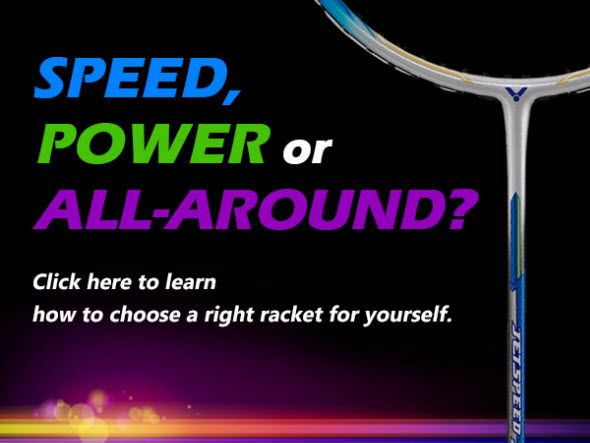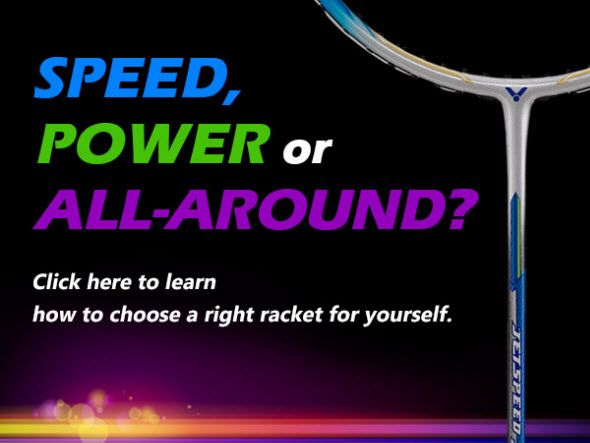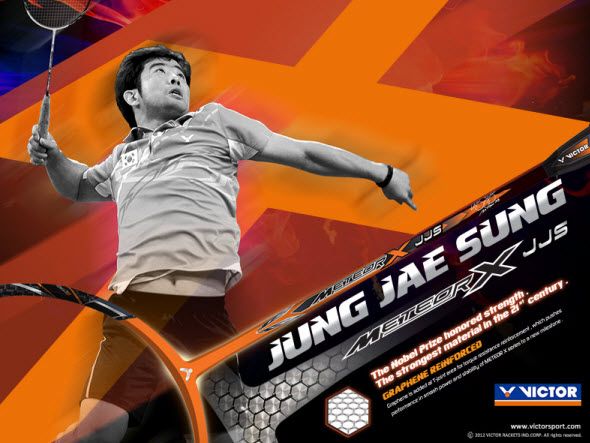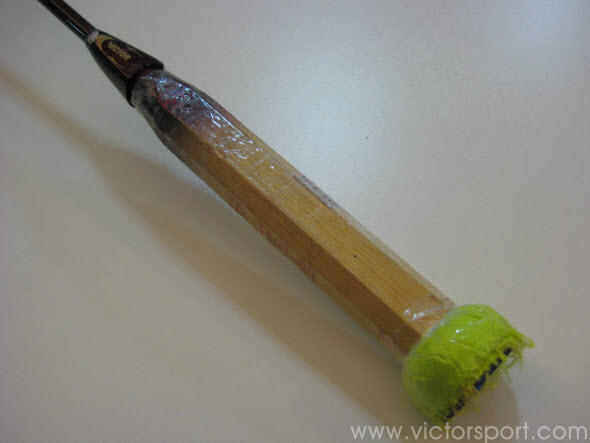Racket design thinking starts from “How the game is played”

The racket is the only medium between the player and the shuttlecock; in the process of a player hitting the shuttlecock, the racket is the only thing that comes into contact with it; every aspect of the structural design of a racket will affect the quality of return shots.
Today, let’s talk about the effect of various shots on racket design.
Badminton shots can be divided into several dozen types according to front face / back face, straight line, opposite angle , the racket face change, horizontal angle difference, shuttlecock landing point and other factors.
Below, we will introduce the nine main shots : clear,slow drop shot, drive,net shot, net lift,smash, cross-court net shot, passive shot and backstop.
1. Clear
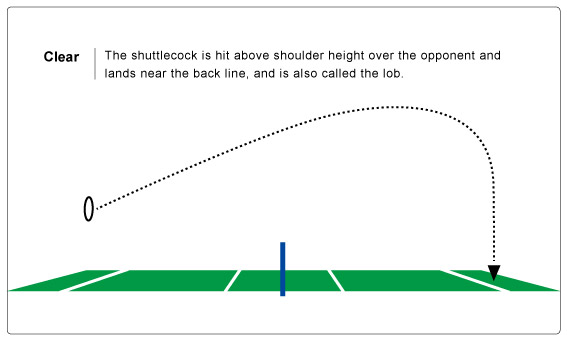
The clear is the longest shot in terms of horizontal distance and quite a lot of power is used when this shot is played, which means the torque resistance of the racket must be increased.
Otherwise, the instant the shuttlecock is hit, the racket will not be able to bear the impact caused by the speed of the swing and will turn, with the result that the player cannot place the shuttlecock accurately.
This means, for this shot, racket “power” and “stability” are the most important racket characteristics.
2. Net lift
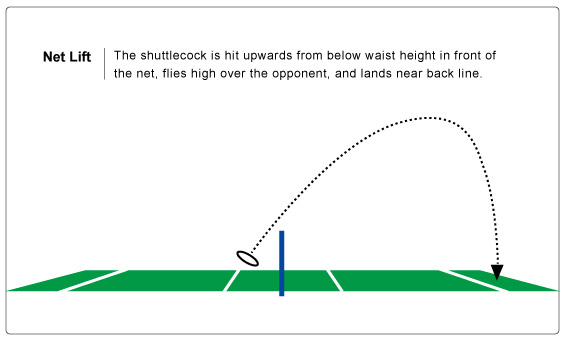
For the defensive net lift, height and depth are most important;a high quality net lift will make the shuttlecock climb quickly in the early stages of flight, then slow down at the high point and fall down.
To make the shuttlecock climb quickly the speed the racket is swung has to increase in a short space of time and this makes racket speed the most important racket feature for net lifts.
3. Net shot

The net shot, often used by attacking players, requires a really deft touch.
The most important part of the net shot is the “rubbing ” movement; the racket travels only a short distance in the swing and impact is relatively small ;the shot requires that the player has good feel so the racket needs to be “agile .”
4. Smash
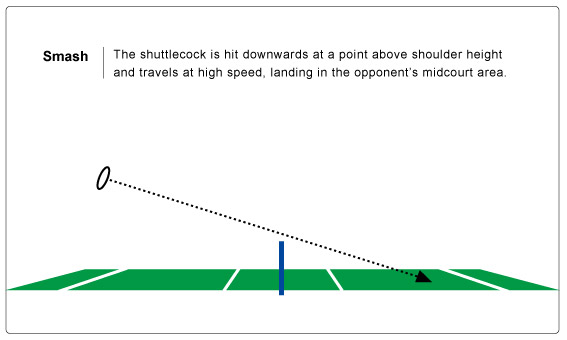
The smash is the fastest, most aggressive and destructive badminton shot and requires quite a lot of racket swinging power, which means that the racket’s torque resistance must be increased.
High speed hitting of the shuttlecock also causes substantial vibration; at this time the role played by the sweet spot is not just as the “effective hitting area,” it also “reduces the strength of the vibration caused by the impact of the shuttlecock.
The most important racket features for the smash shot are power, stability and sweet spot.
5. Slow drop shot
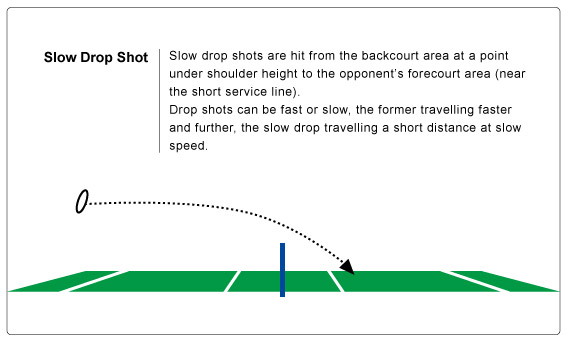
Slow drop shots are a stern test of a racket’s stability.
In the process of playing the slow drop shot, at the instant that the shuttlecock hits the face of the racket the direction of the swing has to be changed, causing the shuttlecock to quickly decelerate and drop at the front of the court because it is subject to component force in another direction.
The racket hits the shuttlecock at a non-vertical angle, greatly increasing the chance that the face will turn! This means that racket stability is the main requirement for this shot.
6. Drive

The drive is an attacking shot. The drive is often a response to the opponent’s smash and has a counterattacking flavor.
The distance and time the racket accelerates are also very short so, when designing a racket, racket speed must be considered.
Also, to reduce the burden on the wrist caused by rapidly turning the racket and the impact of hitting the shuttlecock during fierce exchanges, the agility of the racket is also very important.
7. Cross-court net shot
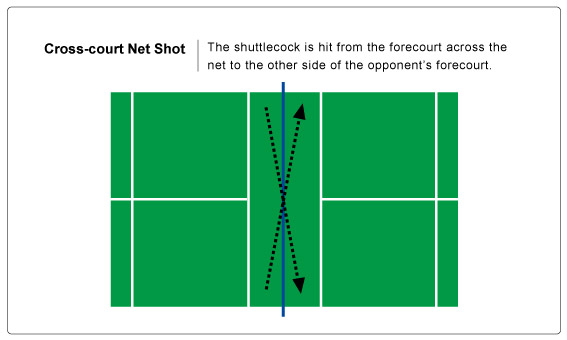
The cross-court net shot is a shot that requires a player to have excellent feel and is often used in a series of attacking shots or as a counter attack shot; delaying the time .
The shuttlecock is shot and disguising the striking movement can also make it hard for the opponent to start moving or keep their balance.
This delicate shot, requiring rapid changes in the angle of the face and direction of swing, needs a racket that is agile.
8. Backstop
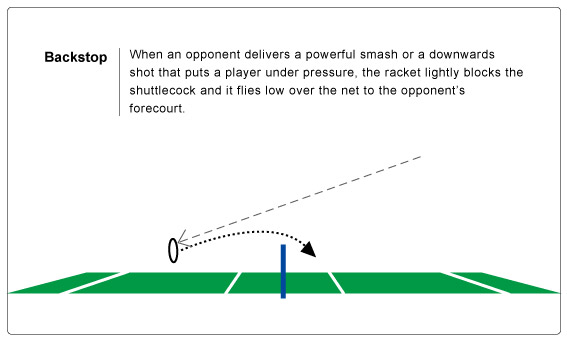
The backstop is a relatively passive defensive shot and is often used in response to fast shots from the opponent when there is no time to take a proper swing.
It uses the power of the incoming shot to send the shuttlecock in a flat trajectory over the net to the front of the court.
The speed of the incoming has a large impact on the racket and, to allow the angle of the return to be precise.
It is important that the racket has good torque resistance;the incoming shuttlecock is also travelling quickly so the player needs to also be able to turn the racket rapidly and smoothly.
For the backstop shot, stability and agility are the two main characteristics required of a racket.
9. Passive shot
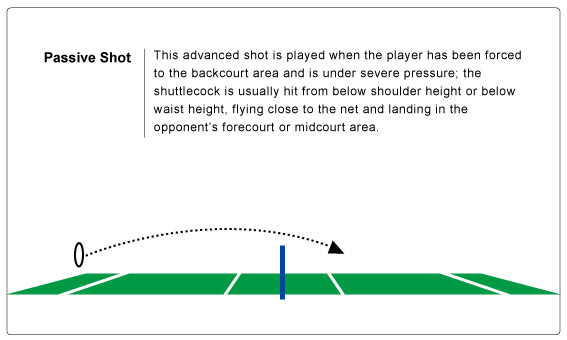
The passive shot is a shot often used by control-type players.
The landing spot of the shuttlecock and its speed aren’t most important, what is most important is making sure the shuttlecock flies low over the net.
Because the shot is made from the back line more power is required than would be from in front of the net, so the torque resistance of the racket must be increased; the position of the shuttlecock is also below shoulder height or even below waste height and, when the shot is played the racket must be swung smoothly and with dexterity.
“Stability” and “agility” are the main considerations with regards to racket characteristics.
( Edit by VICTOR Badminton )








